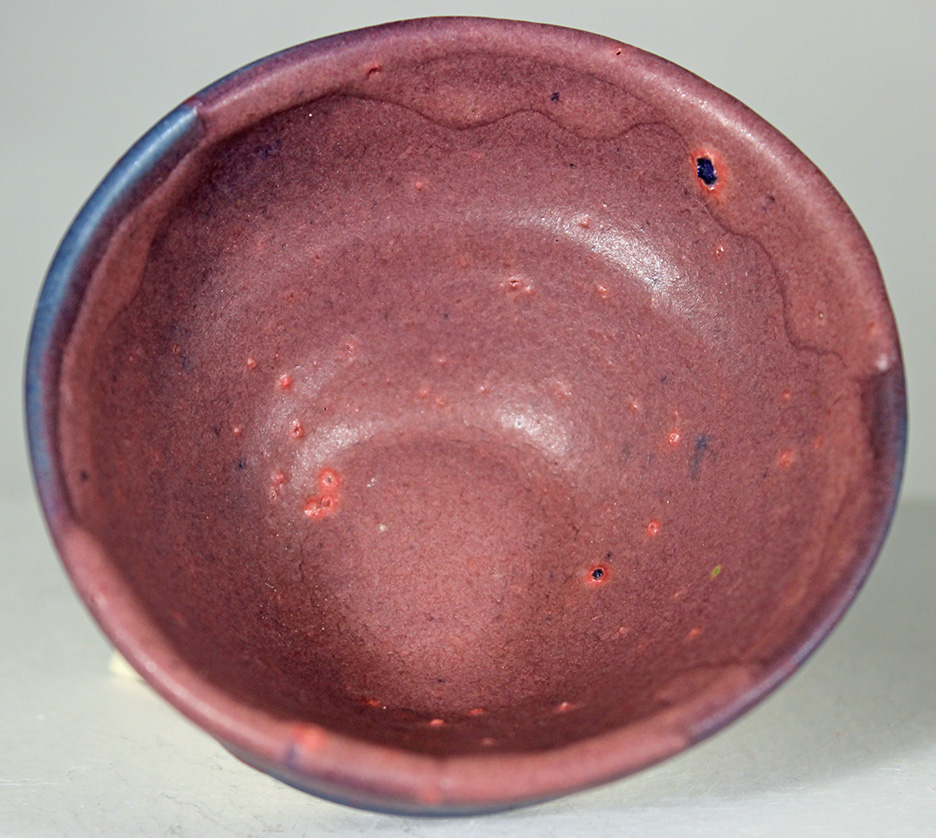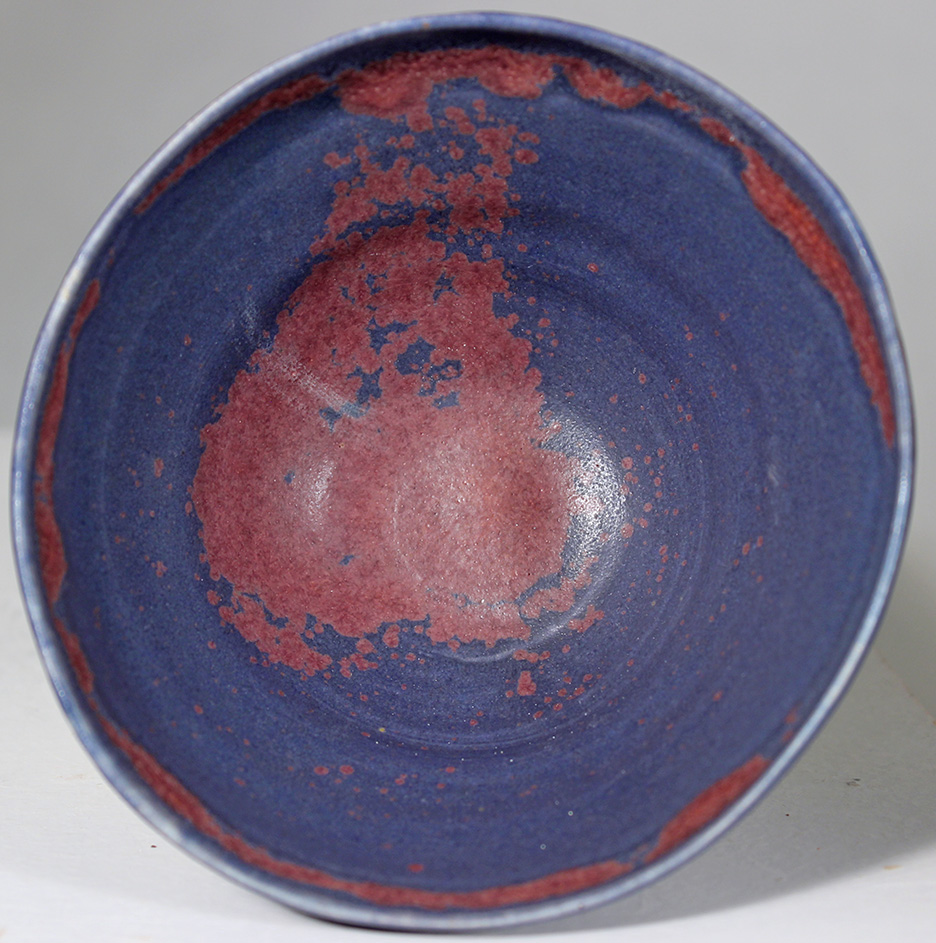nickel pink
firing to cone 10 in oxidation
slow downfire at 50 deg F an hour in the interval 1850 deg F to 1700 deg F
slow downfire at 25 deg F an hour in the interval 1700 deg F to 1650 deg F
One hour hold at 1650 deg F
The first nickel pink glaze:

glaze cooper_404_PAl
This glaze is derived from the glaze number 404 in Emannuel Cooper's book "The Potter's Book of Glaze Recipes".
The seger formula of this glaze differs from Cooper's glaze only in an increase in alumina.
The result is the pink you see above, however in a somewhat underfired glaze.
I explore variations of this glaze looking for a fully matured glaze with matching color.
Variations on this glaze
glaze cooper_PAl + cooper_PALSi, resp. cooper_PAlSi
Cooper_PAlSi is cooper_PAl with additional silica, and the first is the glaze half way between cooper_PAl and cooper_PAlSi.
i.e. here we see the effect of the addition of incremental additions of silica.
We note that the glaze seems equally underfired, though the color is darker.
 |
 |
glaze cooper_404_PAlAlk
The seger formula of this glaze has higher silica and higher alkali metals than cooper_404_PAl.
Higher alkali metals replace some BaO in the bases or first column oxides.
We see a smoother silkier surface, pitted if thick, with a strong blue undertone which dominates if glaze is thin.
 |
 |
glaze cooper_404_PAlZn
Some of the BaO in the seger formula of cooper_404_PAl has been replaced by ZnO to arrive at the seger formula of cooper_404_PAlZn.
We see an underfired glaze with burst unhealed bubbles.
Additionally we see that which was only hinted at in the earlier glazes, a distinct pink layer overlaying a blue layer of glaze.

glaze cooper_404_PAlLi
The seger formula of cooper_404_PAl migrates to this by a shift in the alkali metals from KNaO to Li2O, and a slight increase in silica.
The result is a glaze in which the aqua color dominates, leaving only a remnant of the pink where the glaze was especially thick.
This glaze however seems to be fully mature, with a smooth surface.

Commentary
These few tests indicate that the dominant color for nickel in low Calcia/Magnesia glazes, which are high in Zinc and Baria is blue,
and that the cranberry color is a singular occurance.
It seems also that as such a glaze more fully melts, its color shifts from pink to blue.